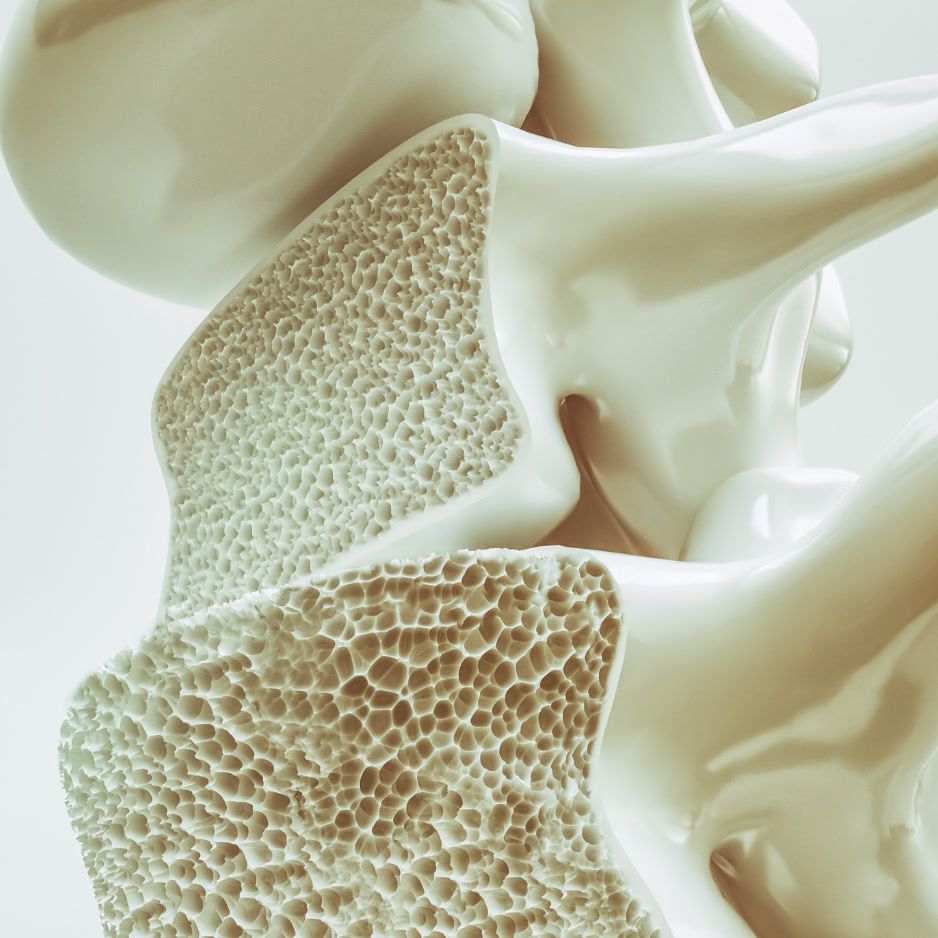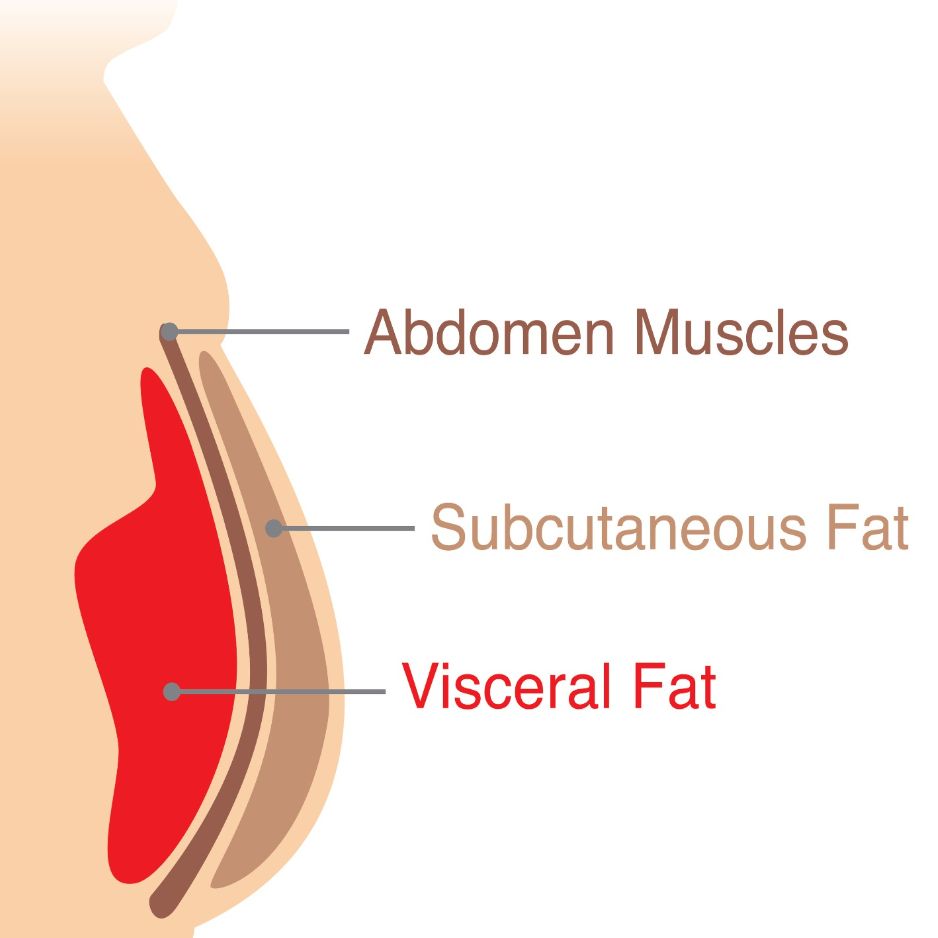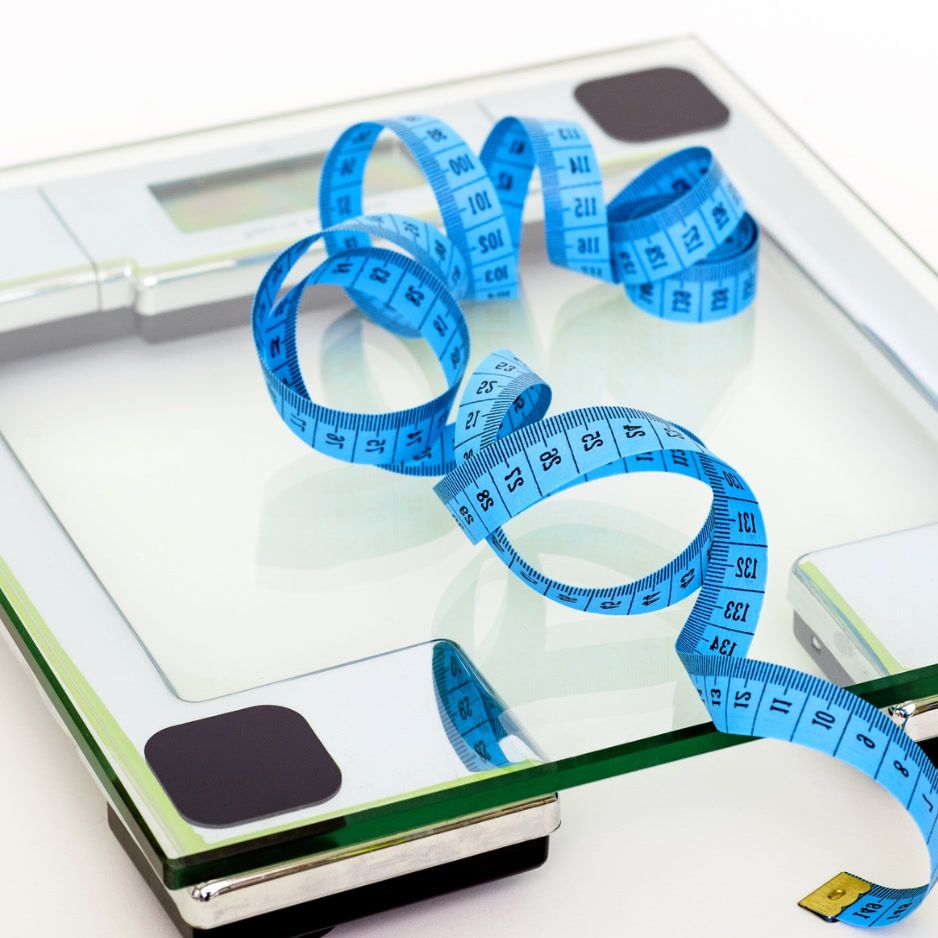Best Time to Exercise: Morning, Afternoon, or Evening?
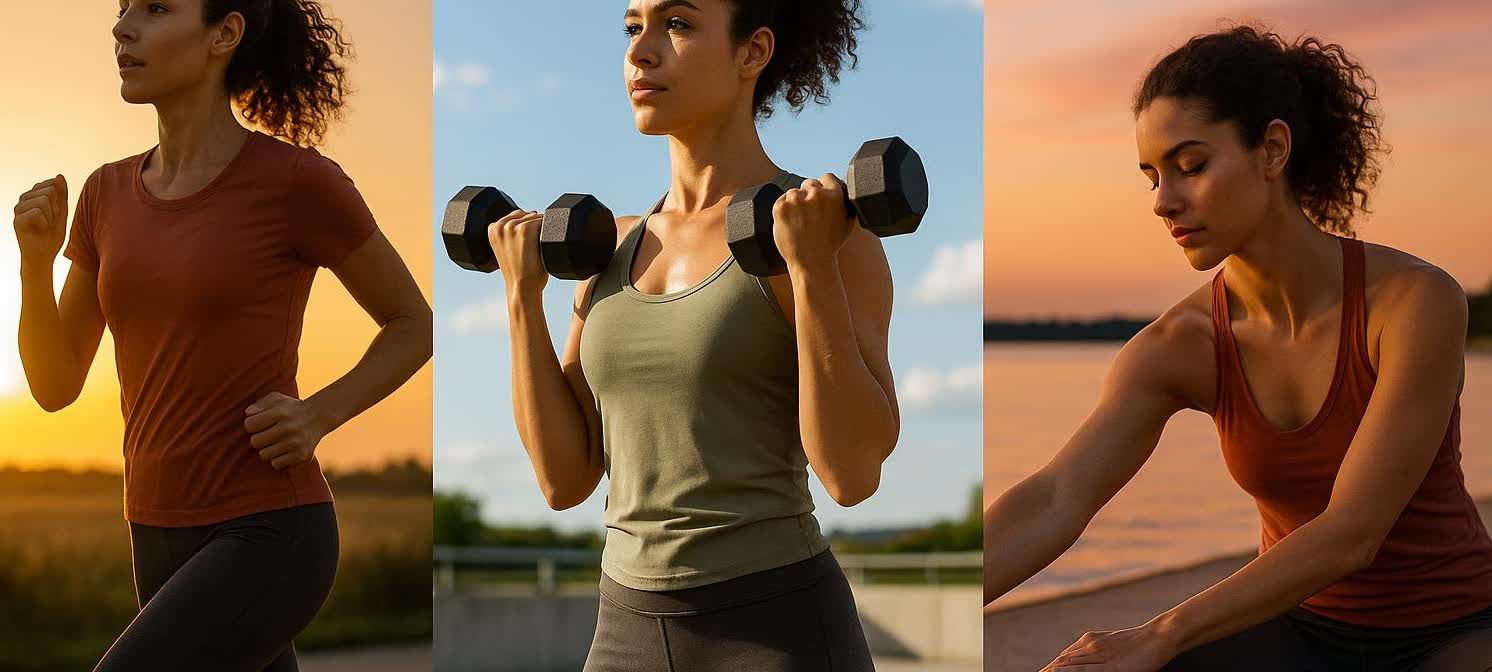
Best Time to Exercise: Morning, Afternoon, or Evening?
Quick answer: The best time to exercise is whenever you can be consistent—yet research still points to unique advantages for morning, afternoon, and evening sessions depending on your goals, sleep schedule, and chronotype.
Why Timing Matters
Your body runs on a 24-hour circadian rhythm that influences core temperature, hormone levels, reaction time, and even how efficiently you burn fat. Aligning workouts with these natural peaks can enhance performance, weight management, and recovery.
Morning Workouts (5 a.m.–10 a.m.)
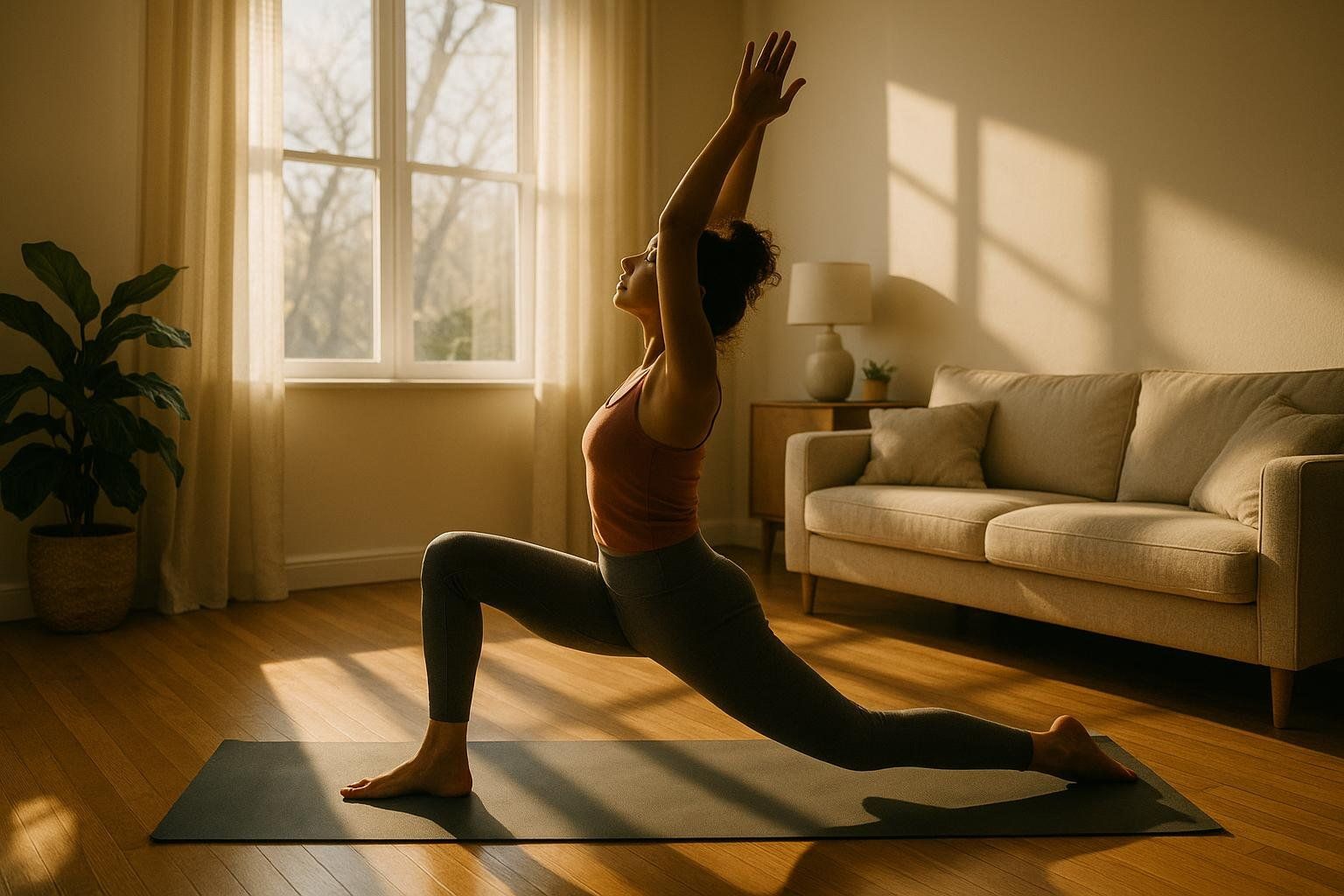
| Pros | Cons |
|---|---|
| Greater fat-burning potential and improved blood-sugar control | Core temperature is lower—muscles may feel stiff until warmed up |
| Fewer schedule conflicts and distractions | A 2020 review in Scientific Reports found that strength and power outputs can be up to 10% lower in the early morning compared with late afternoon |
| Morning sunlight helps set circadian rhythm, improving nighttime sleep | Requires earlier bedtime and a pre-workout snack for high-intensity training |
Best for: Busy professionals aiming to lose weight or boost daytime energy; anyone looking to improve sleep quality.
Tip: Keep a jump rope or resistance band by the bed. Five minutes of dynamic warm-ups raise core temperature so your first lift feels more fluid and less strenuous.
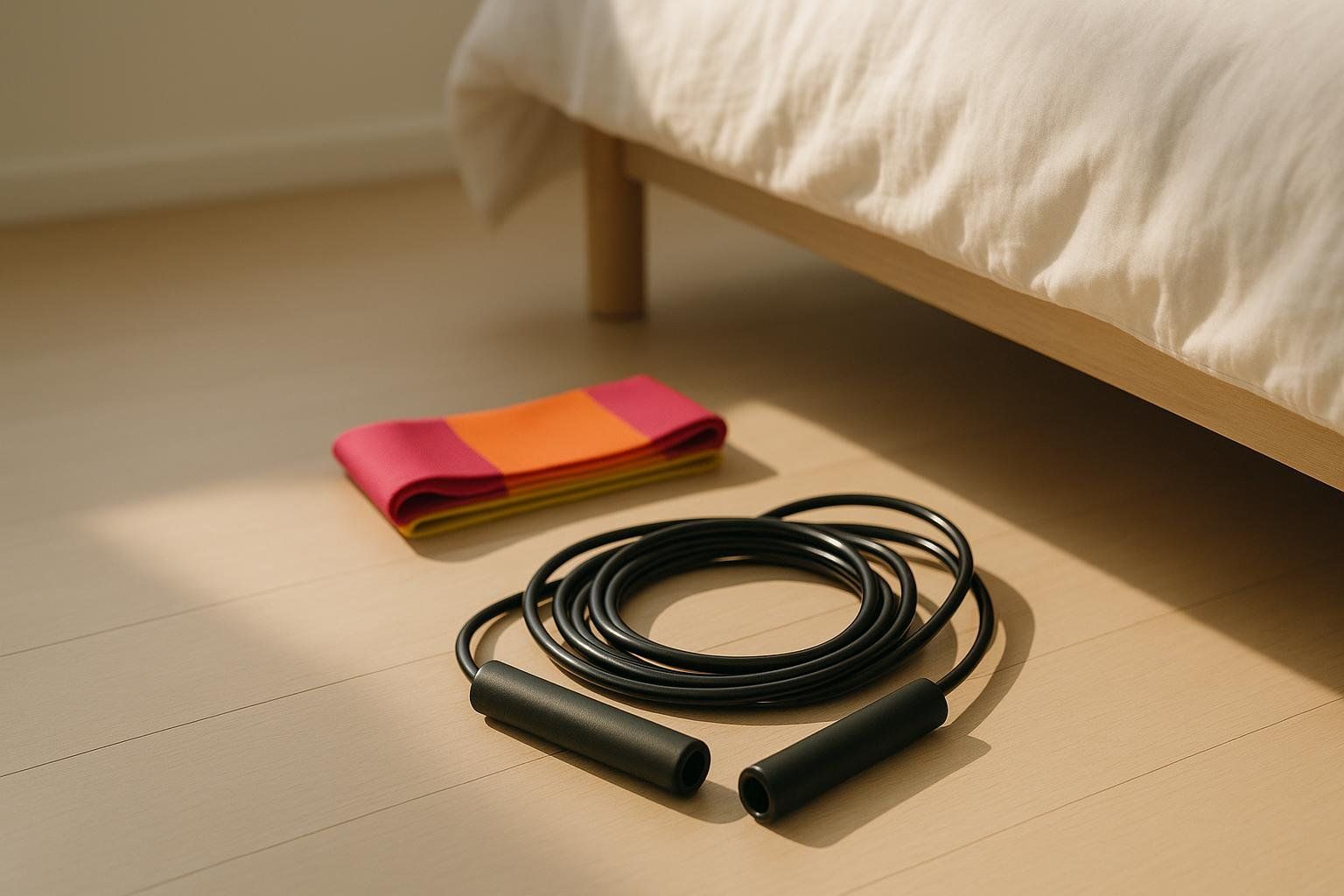
Afternoon Workouts (12 p.m.–5 p.m.)
| Pros | Cons |
|---|---|
| Core temperature, reaction time, and muscular strength peak, supporting maximal power output | Post-meal blood flow to digestion can leave you feeling temporarily sluggish |
| Post-lunch glycogen availability fuels high-intensity intervals | Hard to fit into back-to-back meetings or school pickups |
| Natural cortisol dip reduces perceived effort—workouts feel easier | Heat load is higher as the day warms, which can raise perceived exertion |
Best for: Athletes chasing personal records, triathletes honing speed, or anyone who struggles to wake up early.
Tip: If a full session won’t fit, try a split workout—20-minute strength at lunch, 20-minute cardio after work. When total daily volume is kept the same, two shorter bouts can deliver comparable cardiovascular and VO₂-max gains to one longer session.
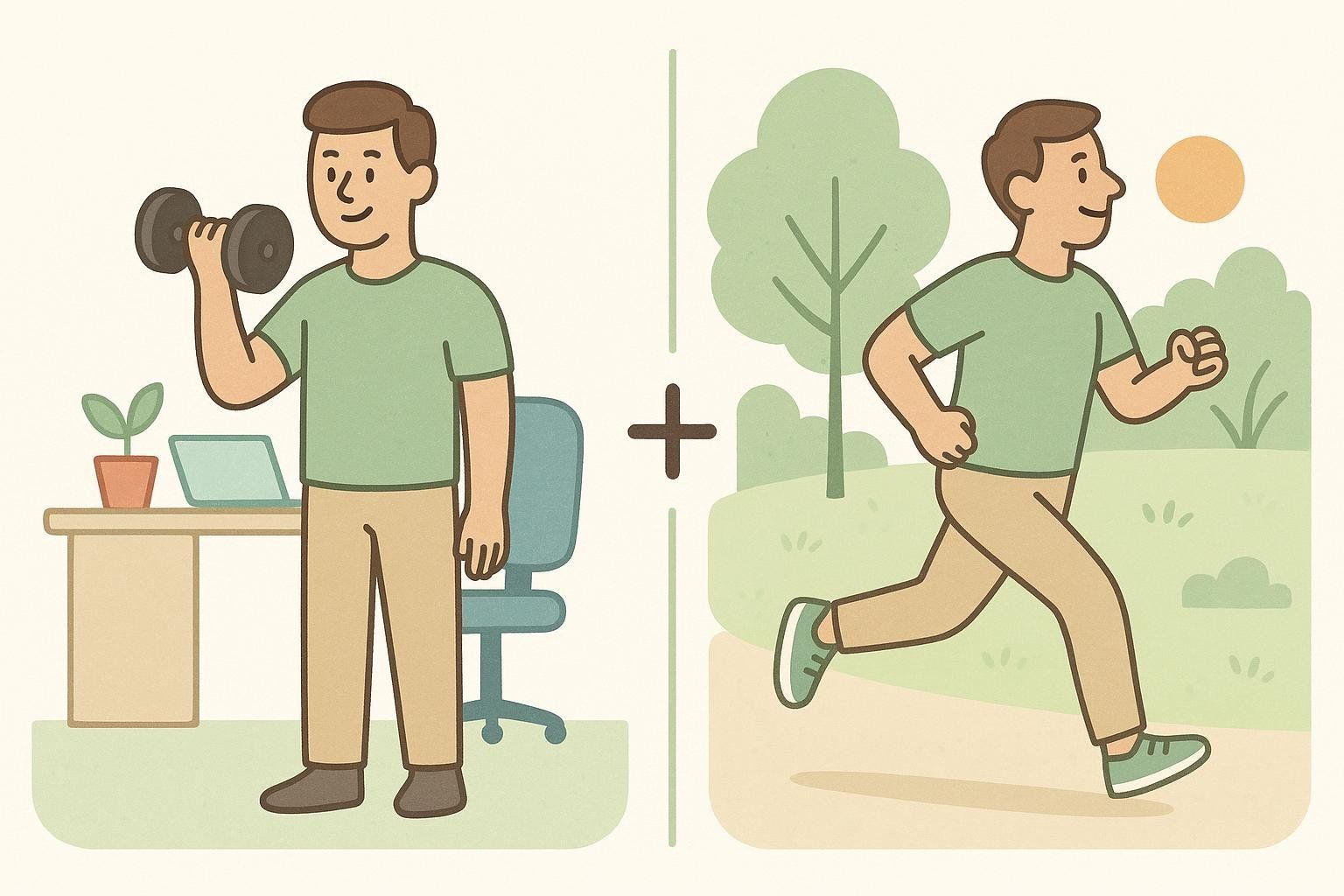
Evening Workouts (5 p.m.–9 p.m.)
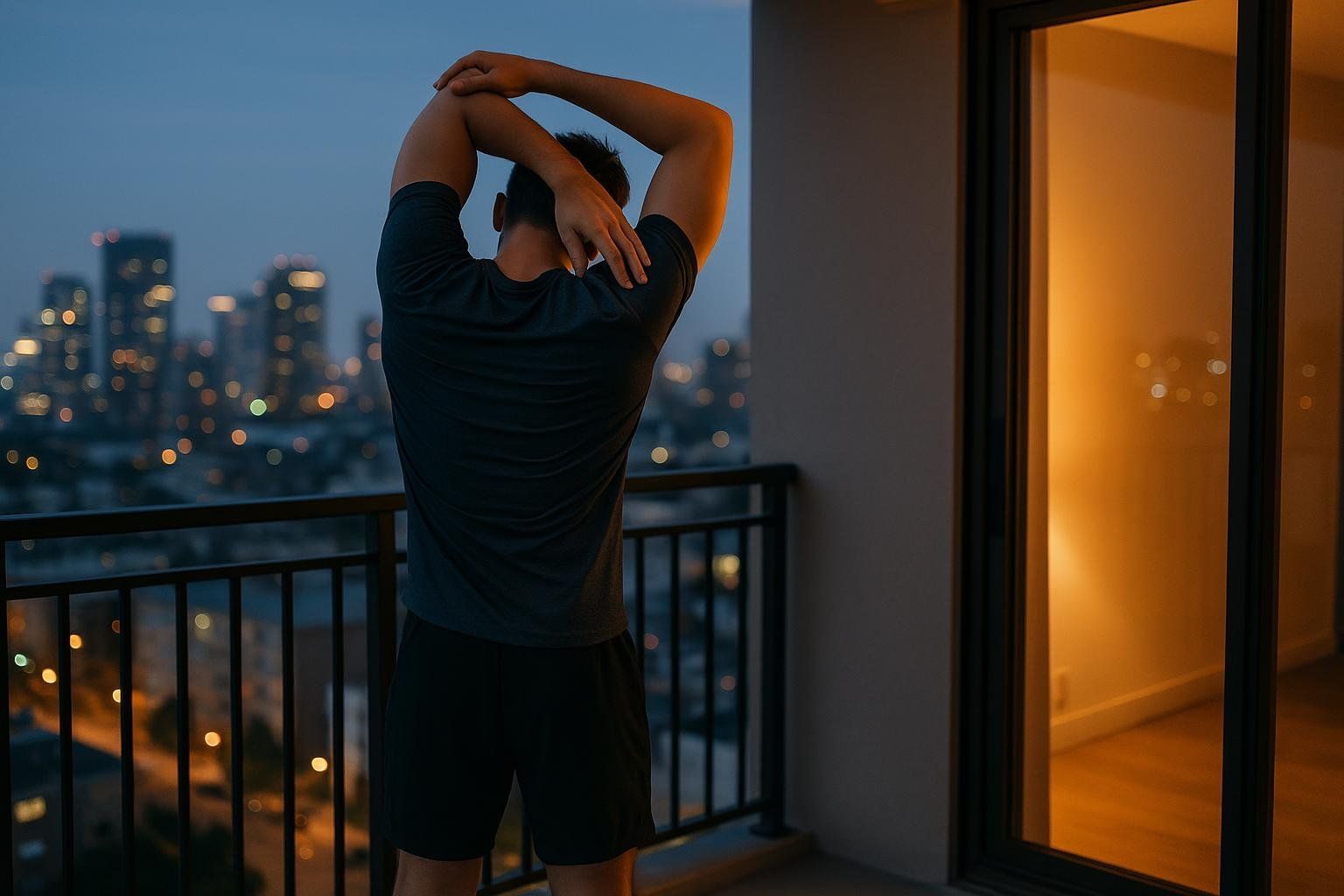
| Pros | Cons |
|---|---|
| Peak muscle strength, flexibility, and anaerobic capacity often occur in the early evening | Late-night HIIT can delay melatonin release and impair sleep |
| Higher body temperature lowers injury risk and improves range of motion | Family dinners or social plans may derail consistency |
| Stress relief: blowing off steam after work lowers evening cortisol | Increased appetite post-training could lead to overeating without a plan |
Best for: Powerlifters, evening chronotypes (“night owls”), or anyone craving a stress-busting sweat session after work.
Tip: Wrap up vigorous exercise at least 90 minutes before bedtime—this buffer lets body temperature and stimulation settle, supporting deeper sleep.
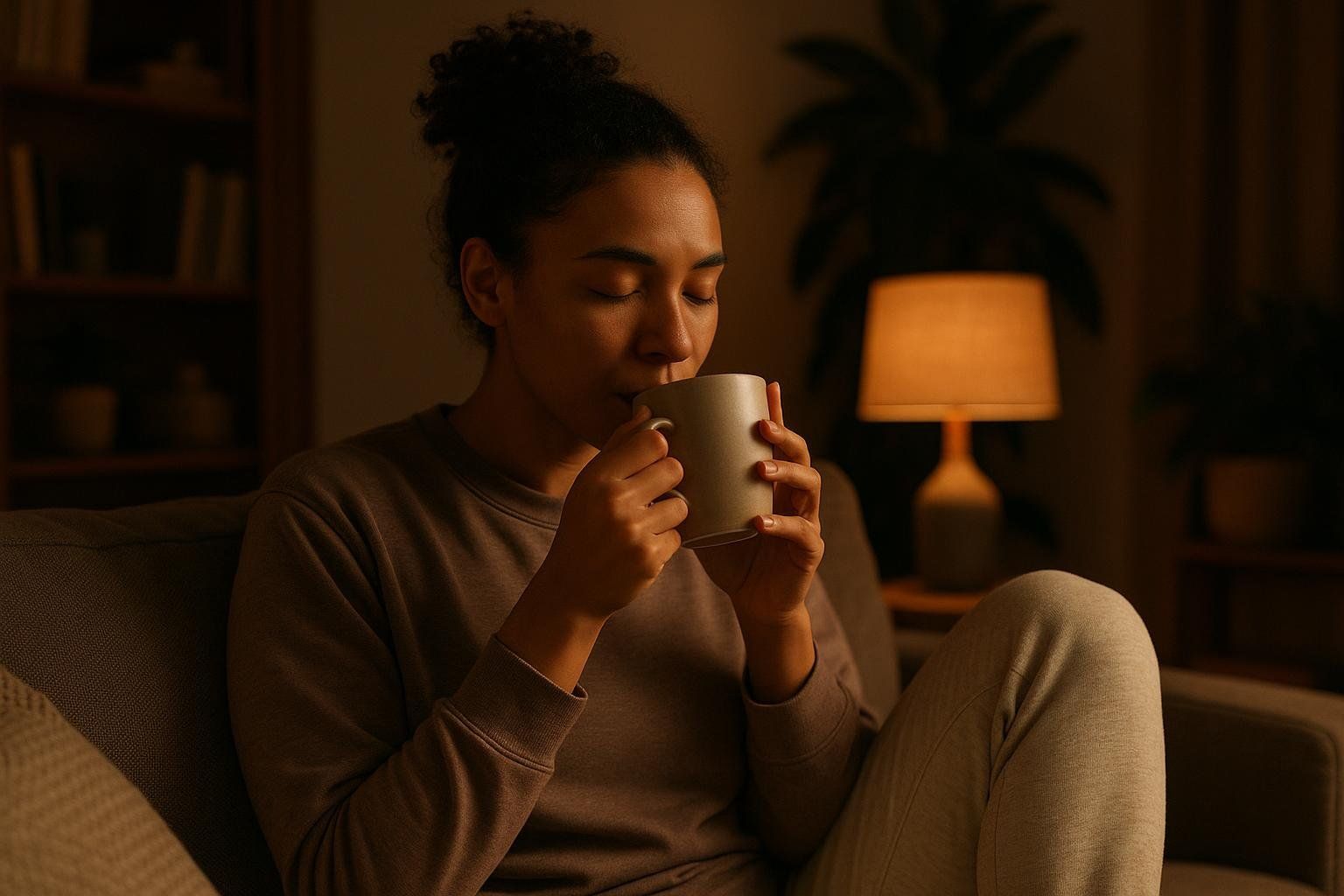
Goal-Specific Timing Guide
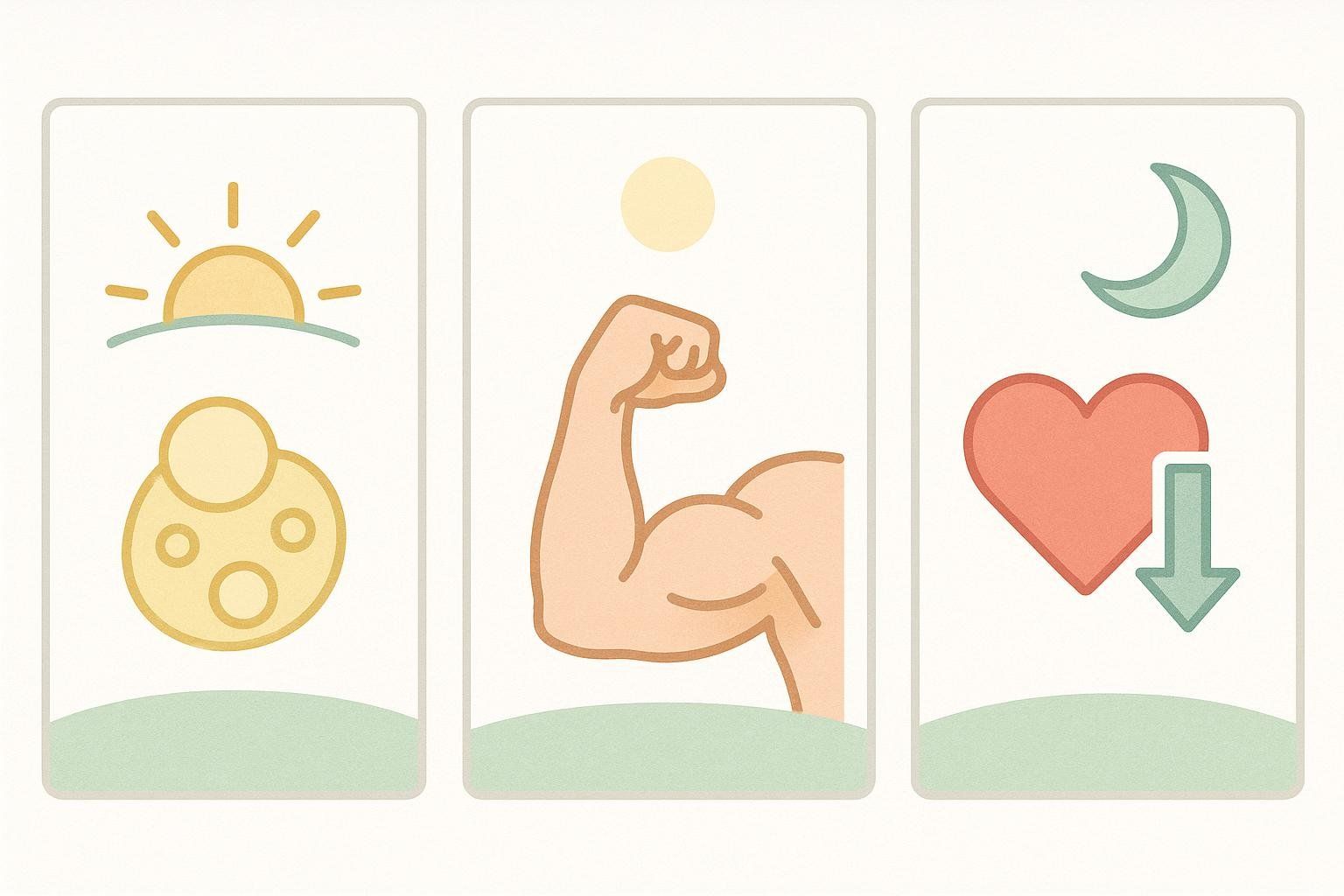
| Goal | Better | Why |
|---|---|---|
| Fat loss & metabolic health | Morning | Higher 24-hour fat oxidation and better appetite regulation |
| Maximum strength/power | Late afternoon–early evening | Core temperature and neuromuscular efficiency peak |
| Endurance performance | Afternoon | VO₂-max and time-to-exhaustion improve as the day progresses |
| Better sleep | Morning or early afternoon | Daylight exposure and earlier exercise help advance circadian phase |
| Blood-pressure control | Evening | Evening aerobic sessions can lower systolic and diastolic blood pressure more than morning workouts in hypertensive adults |
Timing for Different Needs
Shift Workers
Cortisol—a hormone that energizes you for activity—typically spikes shortly after you wake up, regardless of the time on the clock. Aim to train in that window: for example, if you finish a night shift at 7 a.m. and normally sleep from 9 a.m. to 5 p.m., plan a 30-minute workout starting around 7:30 a.m. Then allow at least 90 minutes between the end of exercise and lights-out so heart rate, body temperature, and adrenaline levels taper—helping you fall asleep faster. If that still feels rushed, split sessions (e.g., 15 minutes of light stretching or mobility work before bed and 15 minutes of brisk walking after waking) to stay active without compromising rest.
Older Adults (60+)
Morning stiffness can make early workouts uncomfortable. Exercising in the late morning or afternoon often feels better and may improve balance. Choose a time that allows a thorough warm-up and at least two hours to wind down before bedtime.
Amateur Triathletes
Training at the same time of day as your event helps your body adapt to performing optimally under race-day conditions. Many triathletes schedule high-intensity intervals in the late afternoon and reserve easier aerobic volume for the morning.
How to Pick Your Best Time
- Identify your chronotype. Keep a 7-day log of when you naturally feel most alert and energetic (limit caffeine during the trial). If your peak occurs before noon, you’re likely a lark; if it lands late afternoon or evening, you’re an owl.
- Find an interruption-free slot. Consistency matters more than chasing an “ideal” window.
- Track objective data. Measure changes in fat and muscle mass—regular body-composition scans reveal whether timing tweaks are moving the needle.
- Experiment in 4-week blocks. Shift your primary training time and note energy, performance, and sleep scores.
FAQs
Is morning or evening exercise better for weight loss?
Morning sessions may offer a slight edge because fat oxidation is often higher after an overnight fast. However, total daily calorie deficit is the primary driver of weight loss, so choose the time you can maintain consistently.
Will nighttime workouts ruin my sleep?
Moderate evening exercise generally doesn’t harm sleep, but vigorous training within 90 minutes of bedtime can delay sleep onset for some people.
What if I can only squeeze in 10-minute workouts?
Research on “exercise snacks”—short, intense bouts such as stair-climb bursts—suggests they can raise VO₂-max and improve blood-sugar control without requiring lengthy gym sessions.
Next Steps
- Schedule a body-composition scan: Establish a baseline to see how exercise timing affects fat, muscle, and bone metrics.
- Log your workouts: Note timing, duration, and intensity to spot patterns in energy and performance.
- Adjust and retest: Reassess composition every few months to confirm that your chosen workout window supports your goals.
